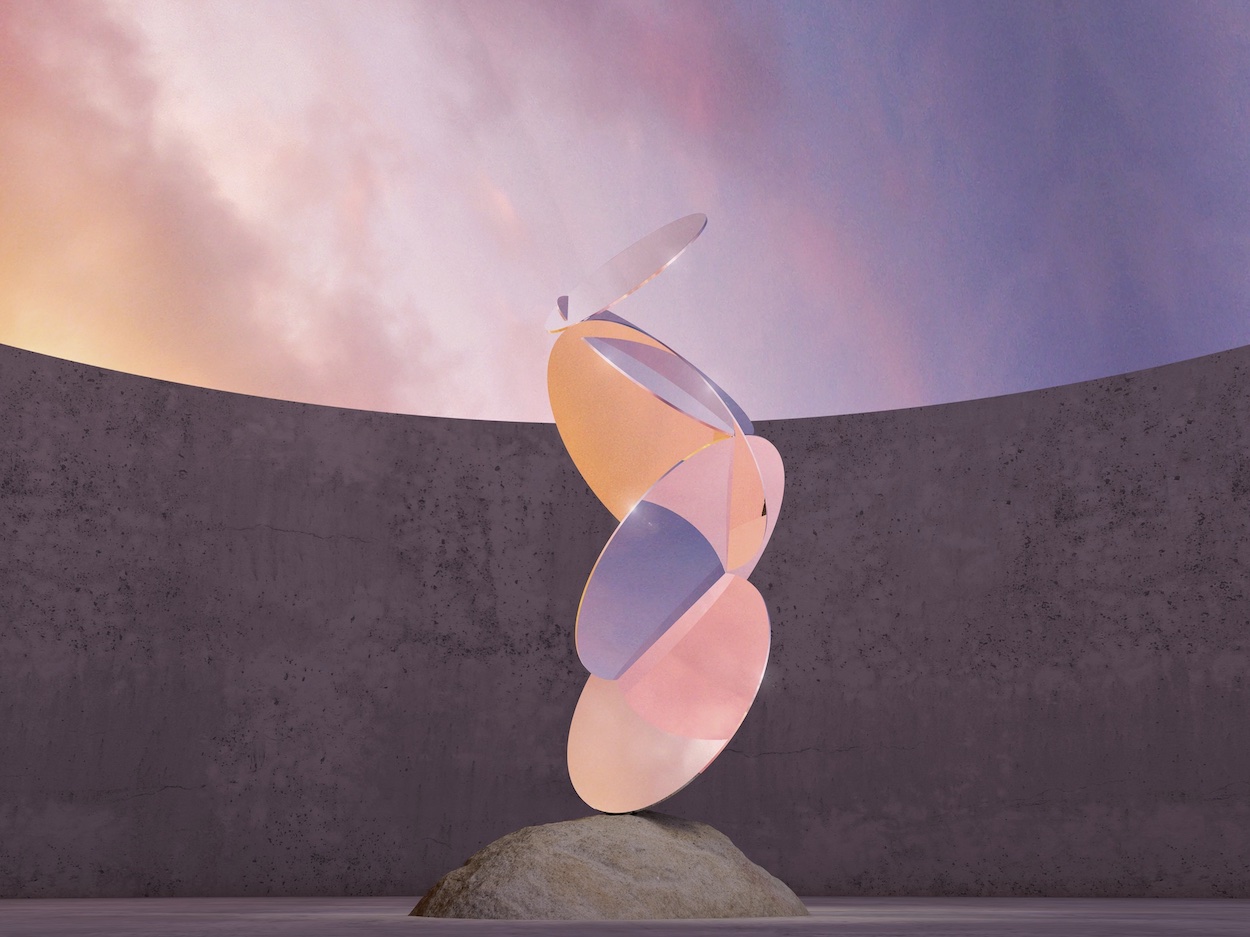Doug Aitken has long embraced the moving image as a way to expand notions of storytelling within fine art and ruminate on our entanglements with nature. His works, which span underwater pavilions, rage rooms, and mirrored ranch houses, remain unmatched in the uncanny spectacle they engender, primarily because they illuminate our complex relationship with technology as a force of connection and alienation. “Were living in a tremendously new landscape, and the possibility of what can be created is immense,” Aitken has said. “These tools of the moving image have a relatively short history in art, and what we can do with them is still largely unknown. We’re still innovating and finding ways to tell stories.”
His latest creation allows viewers to step inside a dematerialized world of his own design. The California artist is helping launch Vortic’s art-centric VR platform with a digital exhibition that debuted earlier this week simultaneously at 303 Gallery in New York, Galerie Eva Presenhuber in Zürich, Regen Projects in L.A., Victoria Miro in London, and on Vortic’s mobile app. To experience the show, called “Open,” viewers strap on an Oculus headset and enter dream-like architectural environments set within a hyperreal world that blends the familiar and fantastical. The project, Aitken writes on Instagram, “looks to create an alternate exhibition space where the artist creates the space as opposed to working in existing architecture.”
In one room, a circular courtyard circumscribed by concrete walls focuses on Metallic Sheep, a rotating column of intersecting polished steel discs set atop a granite boulder that reflects everything in their surroundings except the user’s body. To the side, viewers can peer through a circular window in the wall and gaze upon a vast ethereal skyscape, where a silver hot air balloon similar to his New Horizon—a semi-reflective sky-faring gondola that flew over rural Massachusetts for two weeks in 2019—floats through the air. Natural lighting conditions shift subtly with time thanks to VR algorithms, moving from deep blue afternoons to “golden hour,” a phenomenon Aitken often references in his work.


